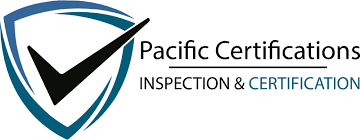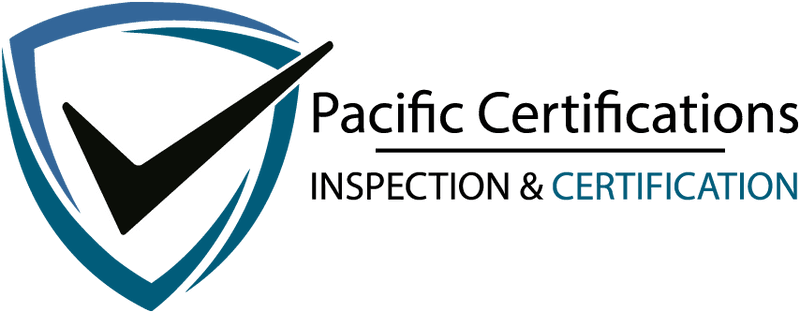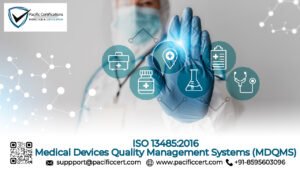What is IEC 31010:2019?

IEC 31010 is an international standard that provides guidance on the selection and application of risk assessment techniques. Risk assessment is a crucial process for identifying and evaluating risks associated with an organization’s activities, processes, and systems. IEC 31010:2019 helps organizations understand how to apply a variety of risk assessment techniques to make informed decisions and manage risks smoothly. The standard offers detailed instructions on how to select the most appropriate risk assessment methods, whether for the purpose of mitigating, controlling, or accepting certain risks.
This standard is widely applicable across many industries, including manufacturing, construction, healthcare, and energy, where safety and major risks need to be managed proactively.
For more information, contact us at support@pacificcert.com.
Purpose
The purpose of IEC 31010:2019 is to provide organizations with a systematic approach to assessing and managing risk. The standard aims to improve risk management processes by offering guidance on the selection, use, and application of various risk assessment techniques. These techniques help organizations evaluate the likelihood and impact of potential risks and determine appropriate actions to prevent or control those risks. By following this standard, organizations can better protect assets, people, and the environment while maintaining compliance with industry regulations.

Scope and Applicability
IEC 31010 is applicable to any organization, regardless of its size or industry, that needs to evaluate and manage risk. The standard covers a broad range of sectors, from industrial manufacturing to healthcare and financial services, where risk assessment is essential for making informed decisions. It is useful for organizations looking to establish, improve, or update their risk management practices. The techniques outlined in IEC 31010 are designed to be flexible, enabling organizations to select methods that best fit their specific needs, context, and risk profiles.
Key Definitions
- Risk Assessment: The process of identifying, analyzing, and evaluating risks to determine the likelihood of their occurrence and potential consequences.
- Risk Management: The process of identifying, assessing, and controlling risks to minimize negative impacts and maximize opportunities.
- Risk Control Measures: Actions taken to eliminate, reduce, or control identified risks to an acceptable level.
- Likelihood: The probability that a particular risk event will occur.
- Impact: The potential consequences or severity of a risk if it were to occur.
Clause-wise structure of IEC 31010
Clause Number | Title | Description |
Clause 1 | Scope | Defines the scope of the standard and outlines its intended applications. |
Clause 2 | Normative References | Lists the references to other standards that provide support for risk assessment techniques. |
Clause 3 | Terms and Definitions | Provides definitions for key terms used in the standard to ensure clarity. |
Clause 4 | Risk Assessment Process | Describes the steps involved in conducting a risk assessment, from risk identification to risk evaluation and control. |
Clause 5 | Risk Assessment Techniques | Discusses various techniques for risk assessment, including qualitative, quantitative, and hybrid methods. |
Clause 6 | Application of Risk Assessment | Offers guidance on how to apply selected risk assessment techniques to specific scenarios or risks. |
Clause 7 | Evaluation and Control | Provides methods for evaluating identified risks and determining the appropriate actions for mitigation or control. |
Clause 8 | Communication of Results | Highlights the importance of clear communication regarding risk findings and decisions. |
What are the requirements of IEC 31010:2019?
IEC 31010 provides clear guidelines to ensure smooth risk assessment. Below are the key requirements that organizations need to implement for risk management:

To manage risks smoothly, organizations need a structured approach. IEC 31010 outlines the necessary steps, from risk identification to communication. These steps ensure that risks are accurately assessed, managed, and mitigated to avoid potential negative consequences.
- The standard requires organizations to identify potential risks that could impact objectives. Smooth identification ensures that no significant risks are overlooked.
- IEC 31010:2019 emphasizes analysing the likelihood and potential impacts of identified risks. Organizations should apply quantitative or qualitative methods based on the type of risk, ensuring a thorough understanding.
- Once risks are analysed, organizations must evaluate their significance. This step helps prioritize risks based on their potential impact, ensuring resources are focused on the most critical risks.
- The standard stresses the implementation of measures to reduce or eliminate risks. This can include operational changes or the introduction of control mechanisms to manage risk.
- Smooth communication of risk findings to all relevant stakeholders is required, ensuring that everyone is aware of identified risks and the steps taken to mitigate them.
- Clear documentation of the entire risk management process is vital for transparency, compliance, and audits. It includes recording risk assessments, decisions, and actions taken.
- The standard emphasizes the ongoing review of the risk assessment process. Regular checks ensure the process remains smooth and that new or evolving risks are identified.
For more information, contact us at support@pacificcert.com
What are the benefits of IEC 31010 Certification?
Achieving IEC 31010 certification offers several key benefits for organizations that manage risks smoothly. By adhering to the guidelines in this standard, businesses can mitigate risks and improve their decision-making process.
To ensure that risks are managed and mitigated smoothly, IEC 31010:2019 certification offers several advantages. By following this standard, organizations gain a structured framework for reducing uncertainty, protecting assets, and making more informed decisions. Below are the benefits of obtaining IEC 31010 certification:

- Certification helps organizations systematically identify, assess, and manage risks to minimize potential negative impacts.
- By using proven risk assessment techniques, organizations can make better-informed decisions, reducing uncertainty in business operations.
- Achieving certification helps organizations meet industry regulations and standards related to risk management.
- Certification allows organizations to focus their resources on addressing the most significant risks, ensuring efficient use of time and capital.
As organizations continue to face growing risks from cyber threats, regulatory changes, and economic uncertainty, the demand for smooth risk assessment techniques is expected to increase. In recent years, organizations across various industries will look to implement ISO 31010 to ensure that they can proactively identify and address risks before they escalate. Compliance with this standard will not only help organizations meet legal and regulatory requirements but also smooth their ability to remain competitive in a rapidly evolving marketplace.
Certification Process: IEC 31010
The certification process for IEC 31010 typically includes the following steps:
- Pre-Certification Assessment: Conducting a gap analysis to identify areas for improvement in the organization’s risk assessment processes.
- Documentation Review: Reviewing the organization’s existing risk assessment policies, procedures, and records to ensure compliance with the standard.
- Stage 1 Audit: A preliminary audit to evaluate the organization’s readiness for certification and identify potential issues.
- Stage 2 Audit: An on-site audit to assess the implementation of risk assessment techniques and overall risk management practices.
- Certification Decision: Certification is awarded if the organization meets all the requirements outlined in IEC 31010.
- Ongoing Monitoring: Regular audits are required to ensure continued compliance and improvement.
Timeline for IEC 31010 Certification
The timeline for IEC 31010 certification involves several phases. Initially, the pre-assessment and preparation phase generally takes 1-2 months, during which the organization reviews its current risk management processes. The Stage 1 audit lasts around 1 month, focusing on reviewing documentation and systems. The Stage 2 audit involves an in-depth assessment of the organization’s practices and can take 1-2 months. Certification issuance happens within 3-6 months, depending on the audit findings and the organization’s readiness for certification.
What is the cost of IEC 31010?
The cost of IEC 31010 certification varies depending on factors such as the size of the organization, the complexity of its operations, and the scope of the risk assessment processes. The costs generally include:
Audit Fees is the Fees for the certification body’s audit process. Training Costs are the Costs for educating staff on risk assessment methods and techniques. Ongoing Maintenance are Costs for regular audits, recertification, and maintaining compliance every 3 years.
How Pacific Certifications Can Help?
At Pacific Certifications, we provide best auditing and certification services for IEC 31010. Our experts will guide you through the certification process, ensuring that your organization applies the correct risk assessment techniques and meets the highest standards for risk management. We offer:
- Stage 1 and Stage 2 audits to evaluate risk management and assessment processes.
- Objective conformity assessments based on IEC 31010.
- Certification issuance upon successful completion of the audit.
- Ongoing surveillance audits to ensure continued compliance.
- Support for multi-site or global operations.
For audits and certification, contact support@pacificcert.com.
IEC 31010 Training and Courses
Various training courses are available to help organizations comply with IEC 31010, including:
- Lead Auditor Training – Equips professionals to conduct external third-party audits.
- Lead Implementer Training – For those responsible for planning and executing IEC 31010 implementation.
- Internal Auditor Training – Preparing internal auditors for certification audits
Pacific Certifications provides accredited training programs. If your organization is looking for IEC 31010 training, our team is equipped to help you
Frequently Asked Questions (FAQs)
How long does it take to get IEC 31010 certification?
The certification process typically takes 3–6 months, depending on your organization’s preparedness and audit outcomes.
Is IEC 31010 certification mandatory for all organizations?
While it is not legally required, IEC 31010 certification helps organizations improve their risk management practices, meet industry standards, and smooth decision-making processes.
What are the main benefits of IEC 31010 certification?
Certification improves risk management, compliance with regulations, and organizational decision-making, reducing potential operational risks.
Can I apply for IEC 31010 certification without a risk management framework in place?
No, organizations must have a risk management system in place before applying for certification.
How often do I need to renew IEC 31010 certification?
IEC 31010 certification is valid for three years, after which recertification is required.
Ready to get ISO 31010 certified?
Contact Pacific Certifications to begin your certification journey today!
Suggested Certifications –
Read more: Pacific Blogs








